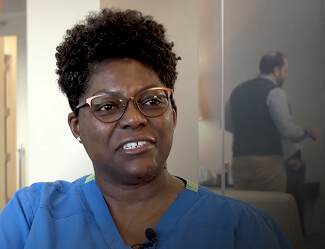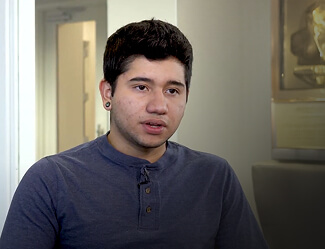Your Smartphone May Be An Indispensable Part Of Your Daily Life, But Using One May Put You In The Emergency Room
As you’ve probably noticed, smartphones mean pedestrians are often distracted, regularly walking the streets with their heads tilted down towards their device. This means they’re not paying full attention to where they’re going – with accidents inevitable.
This study will look into how smartphones have affected pedestrian injury rates, when and where most injuries happen, and which measures might lessen the problem. With one CBS study suggesting that one in three pedestrians use their smartphone to text or call while crossing a busy street, subsequent accidents are no surprise.
Pedestrian Injury And Fatality Risk
According to Traffic Safety Marketing data, in 2023, there were 7,314 pedestrian deaths in the U.S. – 20 per day. Although this represents a slight (3.7%) decrease on 2022 figures, the numbers are still alarmingly high.
And injury numbers are on the rise, with an estimated 68,244 pedestrians injured in traffic crashes in 2023, a 1.3% increase on 2022 numbers.
Most (84%) pedestrian fatalities occur in urban areas, which emphasises the level of risk in city environments. And most pedestrian deaths happen at night (77%) highlighting the combined risk of low visibility and other distractions. Poorly lit, busy streets are especially dangerous, with pedestrians often difficult to spot.
Other dangerous times of day for pedestrians include evening rush hour and early morning. National Safety Council data reveals that evening rush hour features high traffic volume and highly distracted drivers and pedestrians. The most dangerous evening periods are from 4 p.m. to 8 p.m., with the most fatal crashes occurring between 8 p.m. and midnight.
As for morning pedestrian danger, 5 a.m. to 7 a.m. in winter and 4 a.m. to 6 a.m. in summer are peak periods for accidents, due to a combination of reduced visibility and potential fatigue among both drivers and pedestrians.
Traffic-related deaths are a significant U.S. problem, with cities such as San Francisco reporting more traffic-related deaths than homicides in recent years, a significant portion of which involve pedestrians.
Across the country in 2022, over 8,000 pedestrians were killed in crashes involving a motor vehicle, that’s one death every 64 minutes, with pedestrians making up one in five of all car crash deaths. During the same year, pedestrians also made an estimated 140,000 emergency department visits for non-fatal crash-related injuries.
Analysis of Centers for Disease Control and Prevention data suggests that most pedestrian deaths (60% in 2021) occur on high-capacity urban roads that typically feature 45-55 m.p.h. speed limits.
Many high-capacity urban roads are subject to conflicting requirements: they need to provide easy access to commercial destinations (stores, restaurants) and accommodate masses of vehicles on their way elsewhere at high speed. Such cross-purposes can represent a big problem for both drivers and pedestrians.
For example, of the 60 roads that featured the most pedestrian deaths during 2001-2016, all were roads with adjacent commercial retail space, nearly all were multilane roads, and more than three-quarters had a minimum speed limit of 30 miles per hour.
Other key data points
- During 2022, alcohol was a key factor in nearly half (48%) of the crashes that killed pedestrians.
- During the same year, adults aged 65+ comprised 17% of the U.S. population; however, this group was responsible for 22% of all pedestrian deaths.
- Also during 2022, non-Hispanic American Indian and Alaska Native, and Black people suffered the highest pedestrian death rates among all racial and ethnic groups.
Smartphones: A Key Factor In Increased Pedestrian Distraction
Distracted pedestrian behavior isn’t a new phenomenon, but smartphones have made it much worse. A study observed that 45.77% of pedestrians exhibited distracted walking behaviors, with 85.5% of these pedestrians distracted by their smartphone.
Study data also shows that talking on a phone (69%) and texting (9%) caused a significant percentage of distracted walking injuries between 2004 and 2010, while listening to music (13%) was also a significant factor. Pedestrians focused on sending a text message also took 18% longer to cross an intersection, and were four times more likely to exhibit unsafe crossing behaviors.
Smartphones have transformed pedestrian habits when it comes to crossing the street. Here are some of the key changes.
Focusing on a phone = dangerous distraction
Using a phone while crossing, whatever the reason (texting, social media, gaming, calling someone) reduces focus on the road, and increases the likelihood of a collision and injury.
Slower walking speed
Being preoccupied with a phone means walking more slowly, increasing both the time it takes to cross the street and the risk of a collision.
Poor assessment of traffic signals
Using a smartphone can make it easy to miss changing traffic signals, and can quickly put a pedestrian in danger.
Walking around near traffic while in a distracted state is clearly dangerous – but the danger increases depending on where you are in the U.S. According to National Highway Traffic Safety Administration data.
The top ten states for pedestrian fatality rates in 2023 were as follows:
Some states that didn’t make the top ten list were nonetheless subject to notable rises in pedestrian deaths. They include:
- Nebraska: 150% increase.
- Alaska: 66.7% increase.
- Connecticut: 56.5% increase.
Whereas the states the featured the highest total pedestrian fatalities are:
- California: 1,100 deaths.
- Texas: 900 deaths.
- Florida: 850 deaths.
Inappropriate smartphone use is right at the top of the list when it comes to the most common distractions behind pedestrian injuries. Here are some of the key distracting factors.
Distracted Driving
This includes using a smartphone (texting, calling, updating social media), eating, changing music preferences, and even talking to passengers. It also means being distracted by things like digital billboards or other vehicles. Any activity that diverts a driver’s focus from the road increases the risk of an accident.
Distracted Walking
Pedestrians are often distracted by their phones (and other devices) while out walking, which drastically reduces their awareness of their surroundings. This makes it far more likely that they’ll step into the street without looking, or fail to notice approaching vehicles.
Driving/Walking Under the Influence
Alcohol and drugs worsen judgment and coordination, and make it harder for a driver to control a vehicle and react to pedestrians; they also make it harder for a pedestrian to fully appreciate danger and avoid a collision.
Fatigue and Mental Stress
Both fatigue and mental stress regularly contribute to pedestrian injuries – both from a pedestrian and a driver perspective. If a driver is exhausted due to work, or is preoccupied pondering a personal crisis, they may not be capable of fully focusing on the road. Similarly, if a pedestrian is distracted by work tiredness or personal issues, they may not be able to fully concentrate on the road.
Steps that Can be Taken to Ensure Pedestrian Safety
The pervasive use of smartphones has led to a notable increase in distracted walking incidents, which has directly contributed to higher pedestrian injury and fatality rates. Pedestrians’ focus on smartphones as opposed to vehicles as they cross busy roads will continue to needlessly put their lives at risk.
Younger individuals and those living in urban areas are most susceptible to distracted walking incidents, which means that in those cases in particular (but also across all demographic groups), targeted awareness campaigns are essential. The implementation of ground-level traffic signals could also mitigate distracted walking risks.
More mindfully designed urban environments would also help, as they often prioritize vehicle traffic over pedestrian safety. With smartphone-distracted pedestrians clearly here to stay, their presence could surely be better baked into smart city planning.
Ultimately, the best way to prevent smartphone-related distracted walking incidents is for pedestrians to put their phones away and safely cross the road. No phone call or text message is so urgent that it’s worth risking a life for.
At Bader Law, we’re experts when it comes to pedestrian injury cases. If you’ve been involved in an accident, get in touch with us – we can help. And remember: you deserve the best, don’t settle for less!













